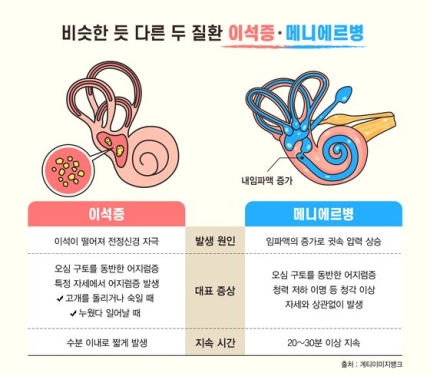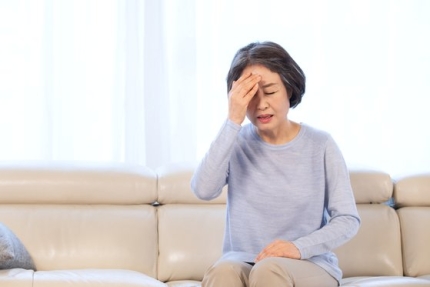Benign paroxysmal positional vertigo (BPPV) is a disease with an unknown cause. The causes are often inferred by examining which gender and age groups have higher incidences. According to the Health Insurance Review & Assessment Service, approximately 48% of all BPPV patients in 2023 were women over middle age (50 years and older), representing the highest proportion. Based on this data and the fact that ear stones are calcium deposits, there is strong support for a correlation with diseases such as vitamin D deficiency or osteoporosis. Professor Byun Jae-yong explains, "Additionally, ear stones can fall when blood circulation is not smooth," and "since blood circulation often deteriorates after middle age, there is a suspected link, and viral infections are also considered one of the causes."
Benign paroxysmal positional vertigo (BPPV) is treated with repositioning maneuvers that move the otoliths, which have fallen into the semicircular canals and cause dizziness, back to the utricle, a location that does not stimulate the nerves. To perform the repositioning maneuver, it is most important to confirm the location of the otoliths. This is done through the Dix-Hallpike test, which involves stimulating the semicircular canals and reading eye movement signals to determine the position of the otoliths. About 95% of patients who undergo the repositioning maneuver experience symptom improvement, but in very rare cases, treatment involves semicircular canal occlusion surgery to prevent the otoliths from touching the nerves.

The exact cause of Meniere's disease has not been clearly identified. Like benign paroxysmal positional vertigo, it is more common in women, accounting for about 70%. Meniere's disease is believed to be associated with autoimmune disorders. During hot summer months, extra caution should be taken with Meniere's disease. It occurs due to an increase in endolymphatic fluid, and there are studies indicating that the prevalence increases in hot weather when the endolymphatic fluid tends to increase relatively. Currently, many studies are ongoing to determine the causes of Meniere's disease.
The treatment goal for Meniere's disease is to reduce the amount of endolymphatic fluid. It is mainly controlled using diuretics. By regulating endolymphatic fluid with diuretics and improving lifestyle habits to limit salt intake (less than 1.5 grams per day), symptoms can be alleviated. Since there is also a consistent association with migraines, maintaining regular eating and sleeping habits, managing overexertion, and stress are necessary. Professor Byun emphasized, "Both Meniere's disease and benign paroxysmal positional vertigo have high recurrence rates," and "if you have experienced either once, ongoing management is essential."
